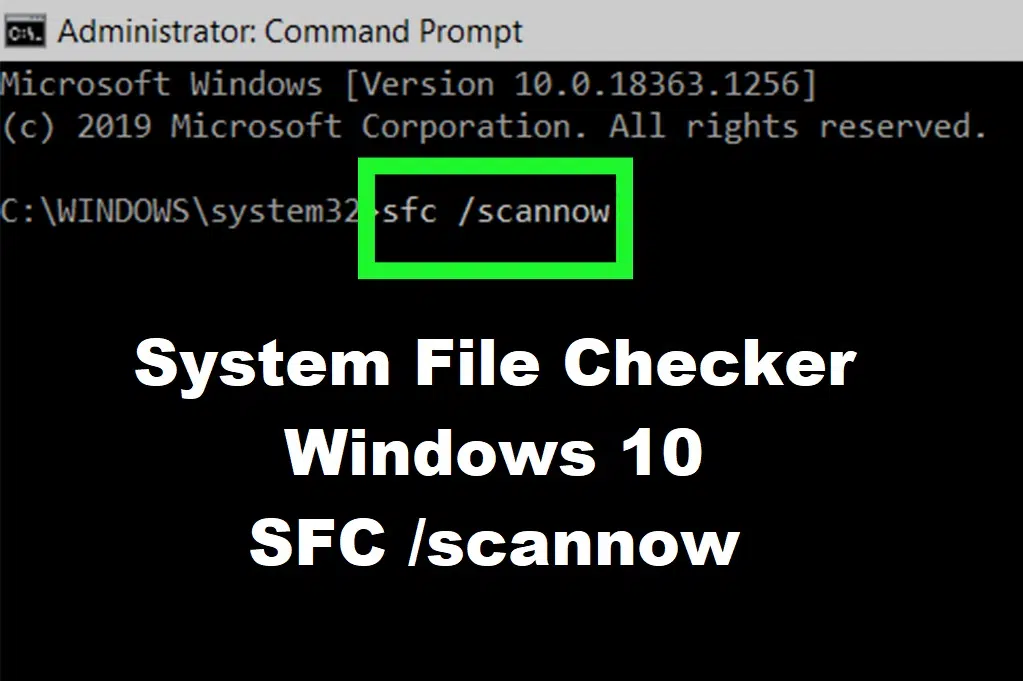The Windows 10 System File Checker (SFC) is a useful built-in command-line utility used to scan and repair protected system files. SFC scannow is an extremely handy tool to assess the integrity of your computer, detect problems with installations and updates, and find replacements for missing or corrupted files where possible. For computer admins it is a great tool to help fix issues that can occur both with Windows and hardware. In this article, we cover all you need to know about this versatile utility.
Running a Basic SFC Scan
To run the System File Checker (SFC), you need to run the command line in Administrator mode, which can be selected from the Start menu. It’s a very easy-to-remember command you need to enter to begin the basic system scan.
sfc/scannow
The SFC command runs equally well on Windows 10 as well as Windows 8.1, 8 and even 7. No matter which Windows operating system you have, you should keep it updated for best results.

The system scan process will take some time to complete, which can take several minutes, so you have to be patient. You can use the computer for other activities in the meantime, as the system scanning does not significantly burden your CPU and other resources.
Once the verification phase of a system scan is done, you will receive one of the following status messages:
- Windows Resource Protection did not find any integrity violations: there are no missing or corrupted system files, and no further action is needed.
- Windows Resource Protection could not perform the requested operation: this problem can be resolved by running SFC scan in safe mode (see last step). Also, check that “PendingDeletes” and “PendingRenames” folders exist when you type
%WinDir%\WinSxS\Tempin Run command. Windows 10 users can also open the Run menu using Win + R. - Windows Resource Protection found corrupt files and successfully repaired them: Details are included in the CBS.Log %WinDir%\Logs\CBS\CBS.log – indicates that the tool detected problems and was able to fix them. You can simply open this log file with Notepad.
- Windows Resource Protection found corrupt files but was unable to fix some of them: according to Microsoft, such files need to be manually repaired.
How to use SFC scannow in Safe Mode
When you cannot complete the SFC scan normally, you should initiate the same process from Safe Mode.
When the Windows 10 OS runs in Safe Mode all third-party apps, and the processes associated with such software will be stopped or deactivated.
Thus, if the SFC error was somehow related with a third party software, now you will be able to successfully perform the system scan.
Here is how you can reboot your device into Safe Mode right away:
- Launch the Run engine on your Windows 10 device: press the Win+R keyboard keys together.
- In the Run box type msconfig and click on OK.msconfig windows 10
- From System Configuration switch to Boot tab.
- Under Boot options select the Safe mode checkbox and also check Minimal from underneath.
- Click OK and Apply.reboot safe mode windows 10
- When prompted choose Restart.
- Now your device will be automatically restarted into Safe Mode.
- From there run the sfc /scannow command.
Most common System File Checker/SFC scannow errors
Although this process can automatically repair the most common Windows soft-related problems, in some situations, SFC itself might experience malfunctions.
Here are some of the most common issues that users reported:Ad
- Sfc /scannow stuck at verification, at beginning system scan – According to users, SFC scan can get stuck at verification or at the beginning of the scan. However, you might be able to fix the problem simply by replacing the corrupted files.
- Sfc /scannow frozen Windows 10 – This is another issue that can appear with the SFC scan. To fix this issue, it’s advised to restore your PC using System Restore and check if that solves the problem.
- Sfc scannow nothing happens – Couple of users reported that nothing happens while using SFC scan on their PC. If that’s the case, try using the DISM scan instead and check if that solves the issue.
- Sfc scannow stops scanning – According to users, sometimes an SFC scan can stop completely on your PC. Fix the problem by checking out this guide.
- Sfc scannow stops you must be an administrator – SFC scan requires administrative privileges in order to run, and if you’re having any issues with SFC, be sure that you’re using Command Prompt as an administrator.

